Irish soda bread is the easiest bread to make and uses basic kitchen ingredients. It's a classic recipe that we often associate with Saint Patrick's Day. It has a biscuit-like texture and is best served with some Irish butter. It's bread anyone can make.
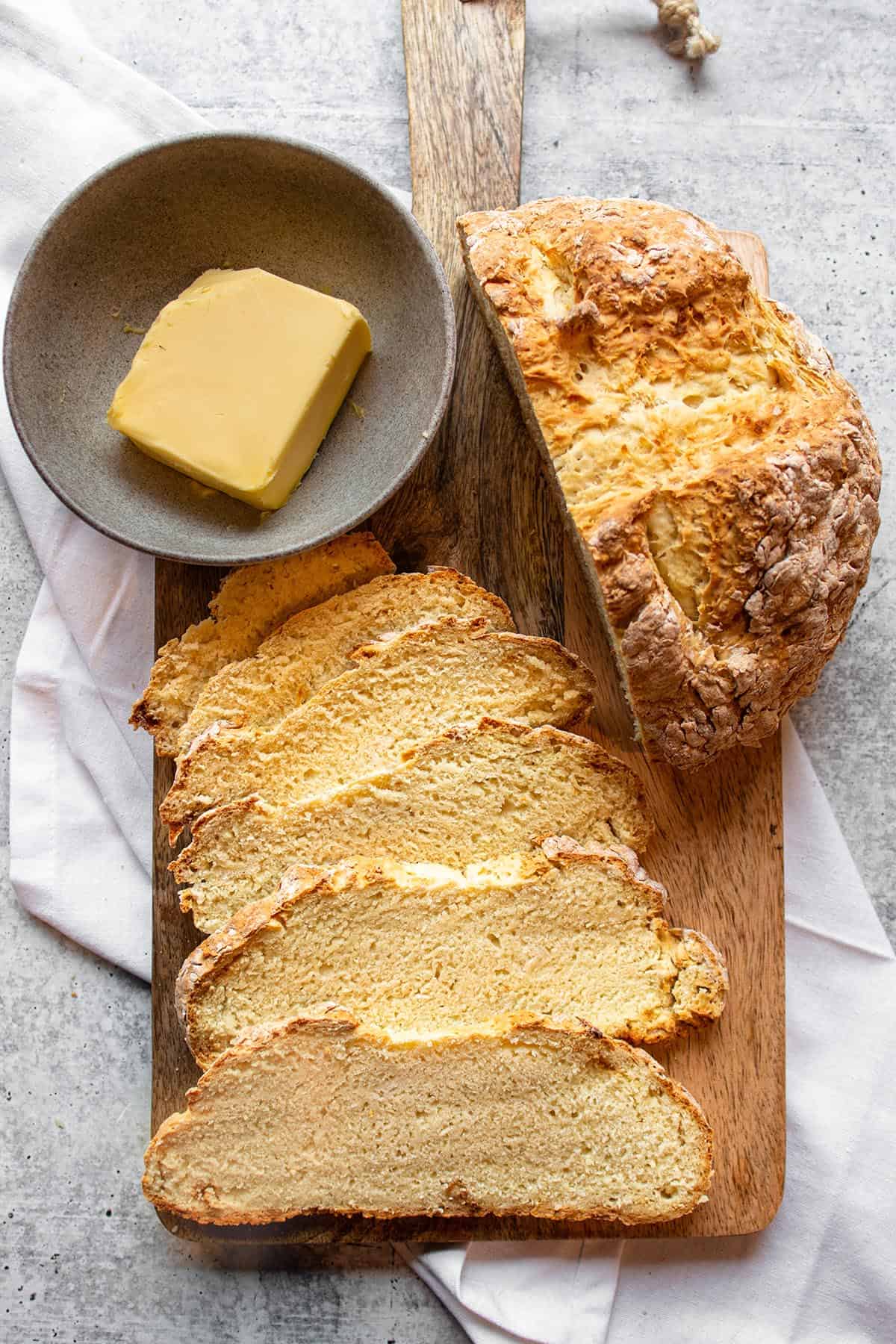
When we think about Saint Patrick's day often people think that it's a time to make corned beef and cabbage or a cabbage and sausage soup. While that is wildly popular in America, it is in fact not a traditional Irish Saint Patrick's day dish.
Soda bread however does have Irish roots and is a very popular bread for that region.
Why is it called soda bread? The word soda does not refer to a carbonated beverage but rather the baking soda that is added to the flour mixture. The baking soda paired with acidic milk acts as the leavening agent and causes the bread to rise.
This bread requires very simple ingredients, takes 5 minutes to put together, and is a great side dish for your main St. Patrick's day meal. It is definitely the easiest homemade bread you could make.
If you are used to baking homemade yeast bread don't expect soda bread to turn out the same. It is a very different taste and texture. Soda bread almost has the same properties as a biscuit but is a tad denser. It is also more crumbly than other bread.
Just spread on a layer of Irish butter and enjoy.
Jump to:
Ingredients
Few notes on ingredients.
The traditional Irish soda bread recipe is made with buttermilk, raisins, and caraway seeds. However, I don't always have real buttermilk sitting around. It is not an ingredient I use often or have on hand at all times. There is a workaround though!
Vinegar: The acidity in the buttermilk is what helps activate the baking soda, so by adding vinegar to our regular milk we can achieve a similar chemical reaction.
Bread Flour: This particular recipe calls for bread flour and it really does make a difference. I have made a lot of soda bread with both all-purpose flour and bread flour and with a side-by-side taste comparison, the bread flour came out on top.
With that said, if all-purpose is what you have it will also work. Bread flour is just the preferred choice.
Baking Soda: This is a must. Baking soda is what gives this bread its rise.
*Full measurements in the recipe card.*
Instructions
Preheat oven to 400 degrees. If using a cast-iron skillet place it in the oven at this time to start warming it up while the oven is also warming.
In a 2 cup liquid measuring cup, combine the milk and vinegar and allow to sit for 10 minutes.
In a large mixing bowl add flour baking soda and salt then mix together.
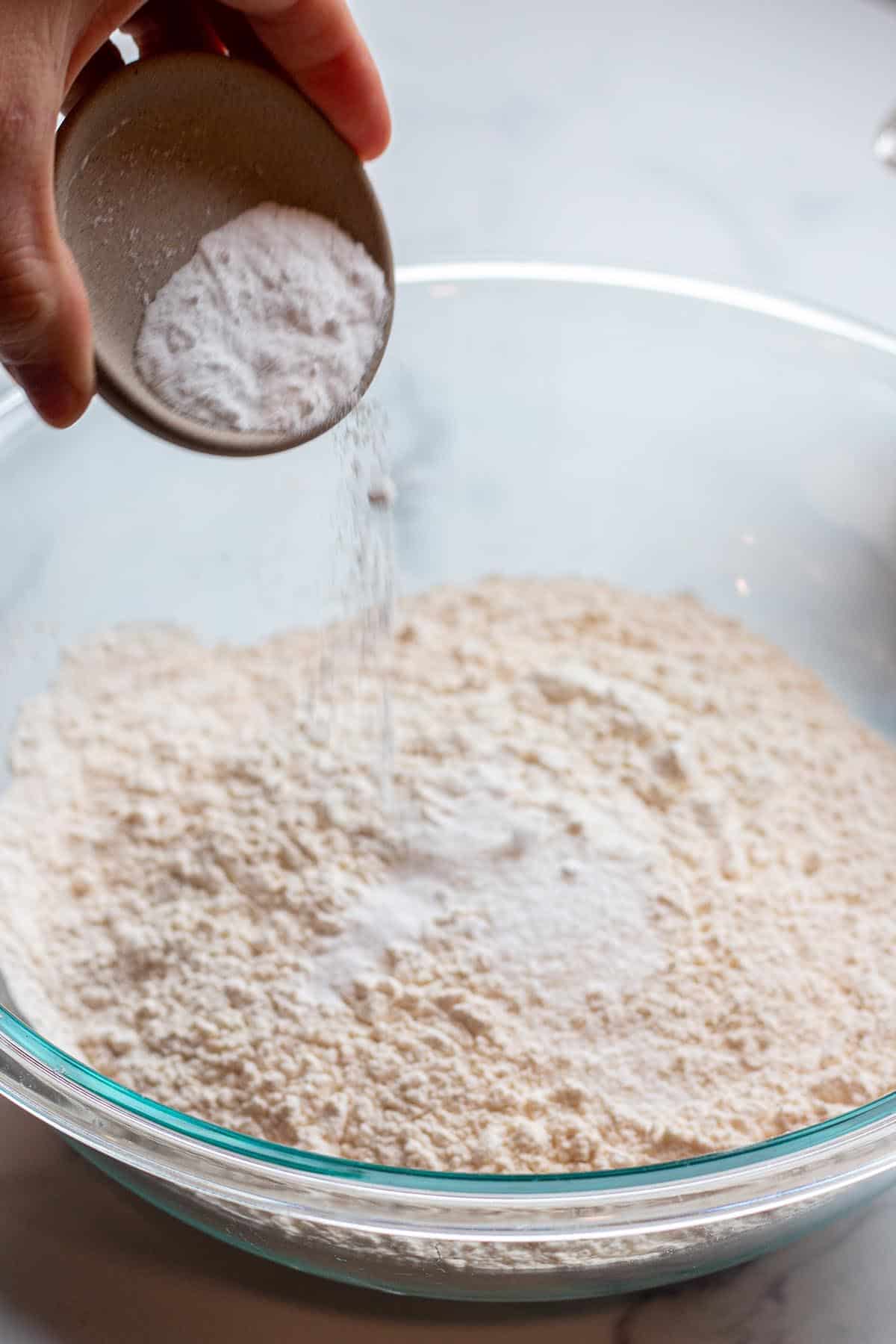
Add the softened butter and cut it into the flour with a pastry cutter or your hands. The pieces of butter should be pea sized or smaller.
Whisk the egg into the milk mixture then, slowly add in the milk mixture with a fork or danish dough whisk as adding.
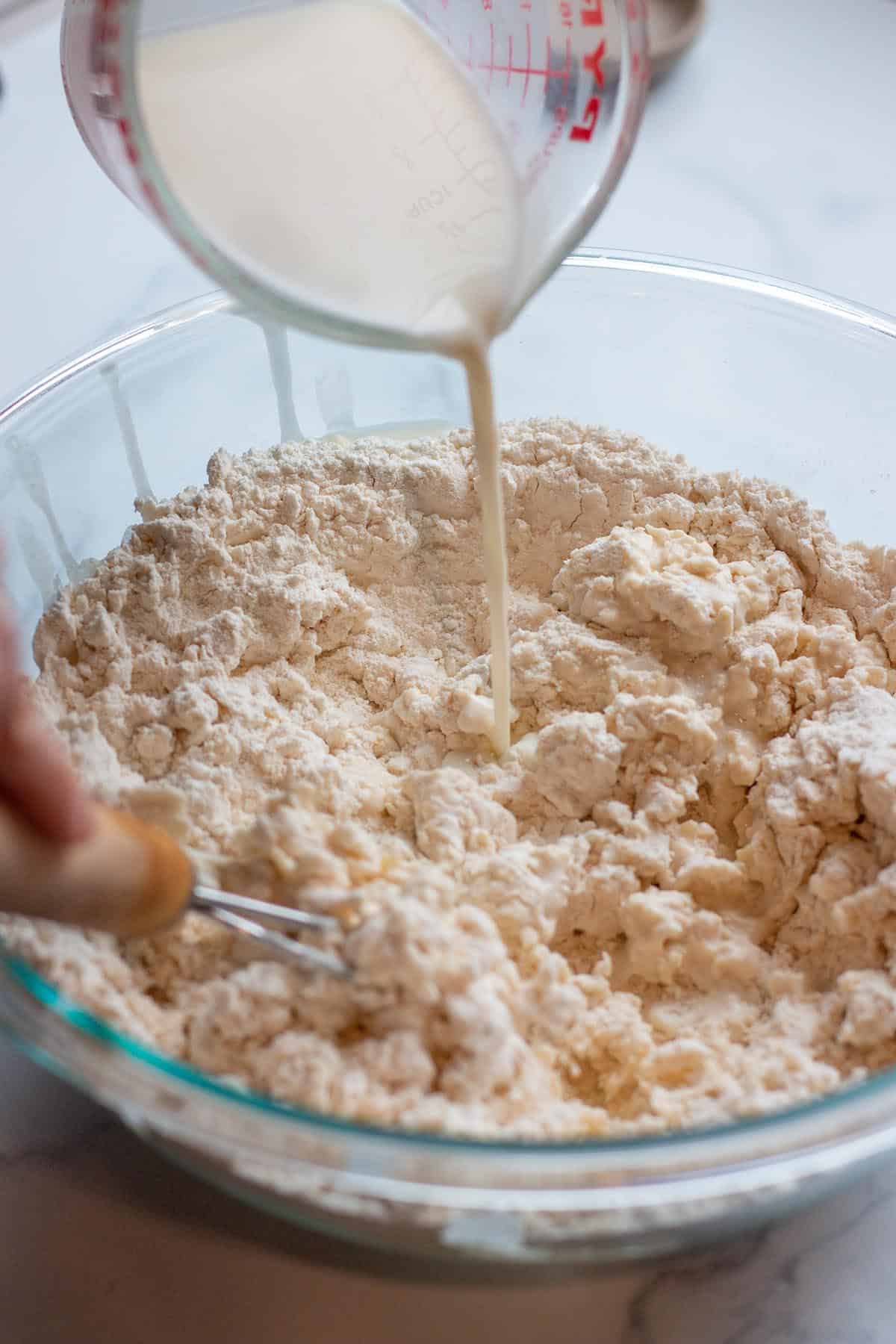
Mixing until everything is fully combined and starts to form a ball. Soda bread is a very sticky dough so make sure your hands and work surface are lightly floured.
On a floured surface, remove dough from the bowl and using your hands, form the dough into a round loaf.
The more you handle it the denser it will become.
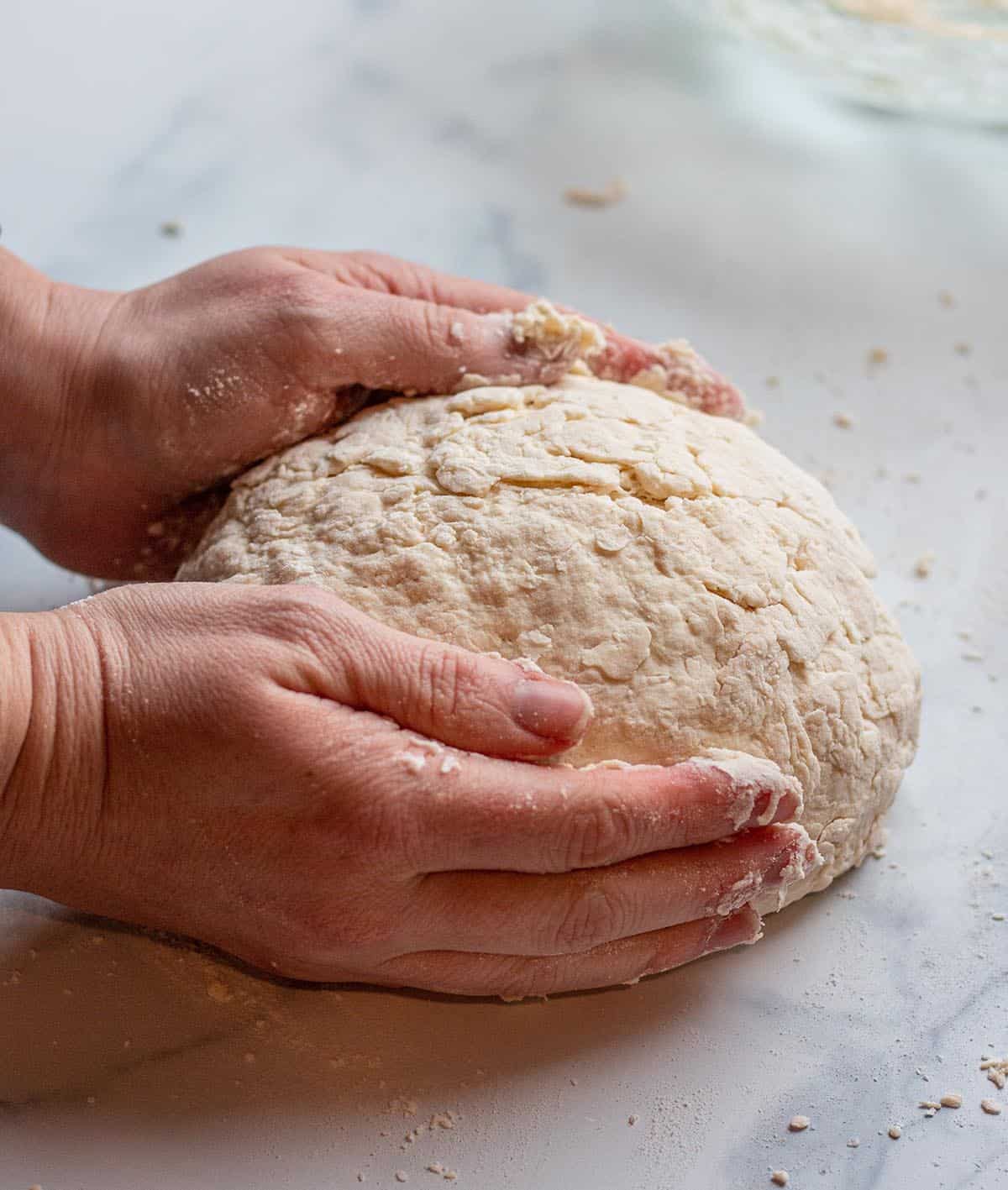
Remove the heated skillet from the oven and add in 1 tablespoon of butter. This helps the bread from sticking and gives it a nice crispy crust.
Add dough to the skillet and with a serrated knife cut a deep cross in the top of the bread. about ½-3/4" deep.
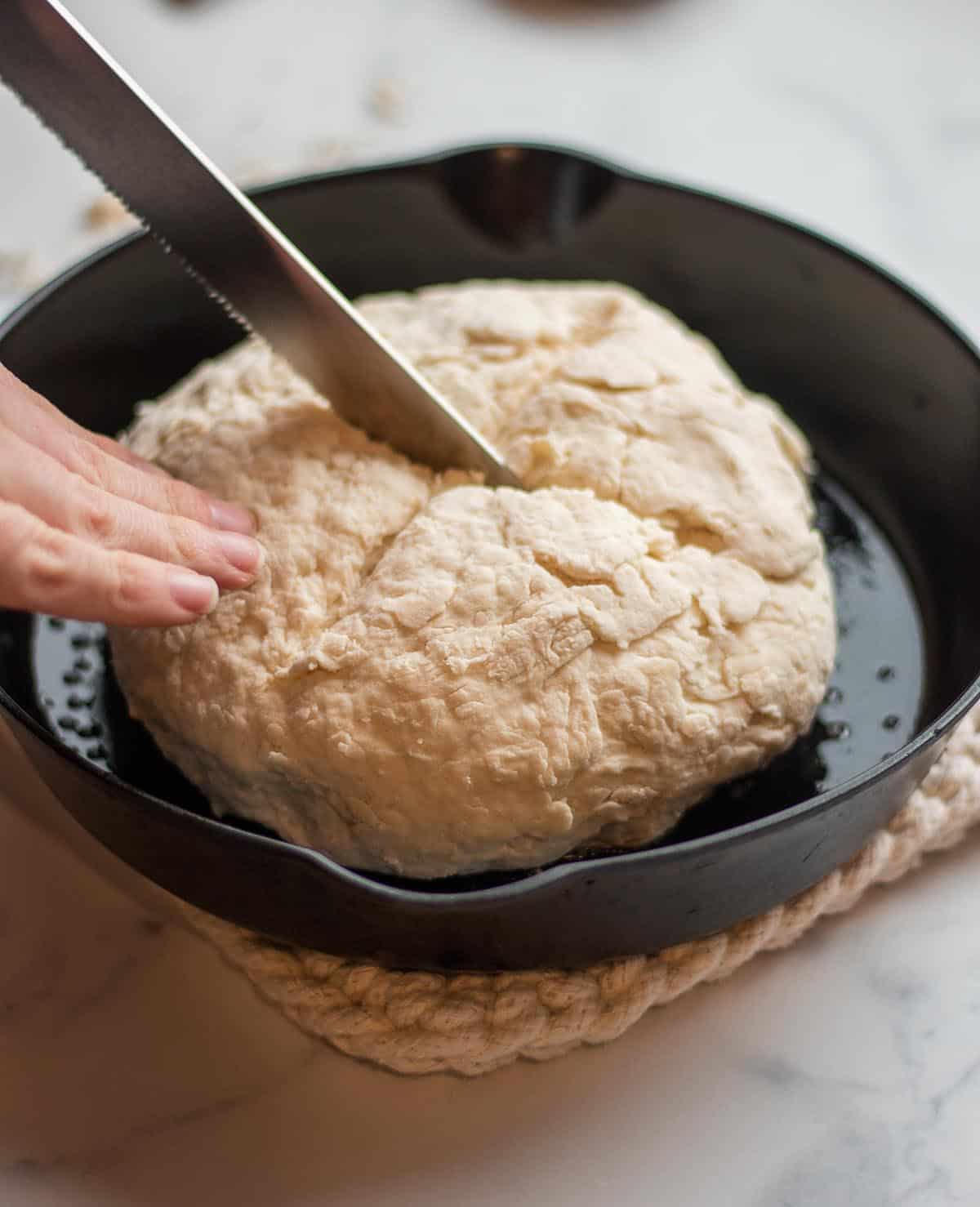
Return to the oven and bake for 40 minutes, or until the top is golden brown. If the top starts to get too dark you can lightly cover it with foil. This will prevent to top from burning.
Remove from oven and place bread on a wire rack and allow to cool.
Slice, then spread on some Irish butter and serve.
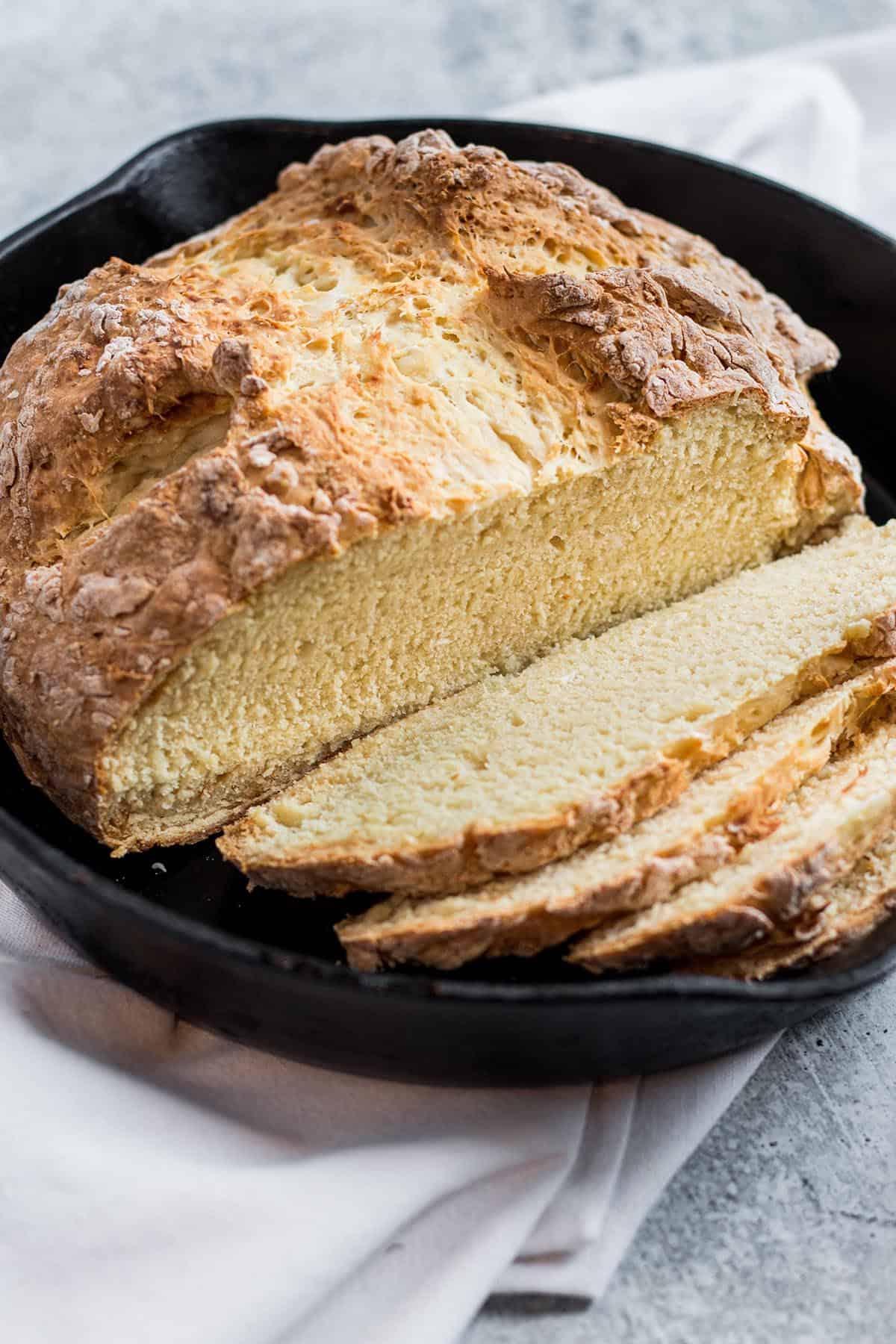
Want to complete your Saint Patricks Day dinner? Consider making corned beef and cabbage or a shepherd's pie. While these recipes are not traditional Irish dishes they are a fun way to celebrate.
Soda bread also goes great with soups, chili, and stews! Try out these homemade soups to go along with your bread.
Other Saint Patrick's Day Ideas:
📋Recipe

Irish Soda Bread without Buttermilk
Equipment
- Sharp Serrated Knife
Ingredients
- 1 & ¾ Cup Milk
- 2 Tablespoons White Distilled Vinegar
- 4 & ¼ Cup Bread Flour
- 2 teaspoon Baking Soda
- 1 teaspoon Kosher Salt
- 4 Tablespoons Unsalted Butter - Cubed and slightly softened.
- 1 Large Egg
Optional
- 4 Tablespoon Butter - 1 Tablespoon for the skillet and rest for spreading.
Instructions
- Preheat oven to 400 degrees. If using a cast iron skillet, place it in the oven at this time to start warming it up.
- In a 2 cup liquid measuring cup, combine the milk and vinegar, whisk, and allow to sit for 10 minutes.
- In a large mixing bowl, add flour and whisk in the baking soda and salt.
- Using a pastry cutter or your hands, incorporate the cubed butter into the flour mix. The butter should be the size of peas or smaller.
- Whisk the egg into the milk mixture.
- Slowly add in the milk mixture with a fork or danish dough whisk. Make sure to whisk ingredients together as you combine them.
- Mix until everything is fully combined and starts to form a ball. Soda bread is a very sticky dough so make sure your hands and work surface are lightly floured. Add a little bit of flour at a time if it is difficult to handle.
- On a floured surface, remove dough from the bowl and using your hands, form the dough into a round loaf.
- Remove skillet from the oven and add in 1 tablespoon of butter. This helps the bread from sticking and gives it a nice crispy crust.
- Add dough to the skillet and with a serrated knife cut a deep cross in the top of the bread. about ½-3/4" deep.
- Return to the oven and bake for 40 minutes, or until the top is golden brown. If the bread starts getting too brown you can cover with foil to prevent it from burning.
- Remove from oven and place bread on a wire rack and allow to cool.
- Slice, then spread on some Irish butter and serve.


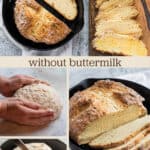
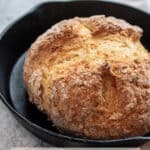
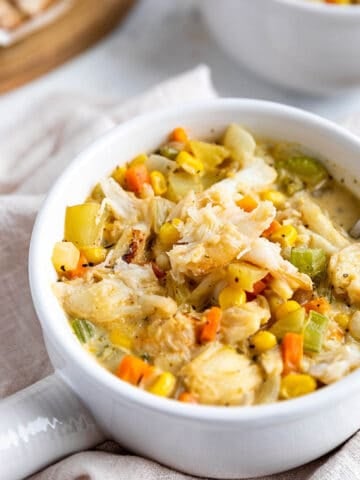
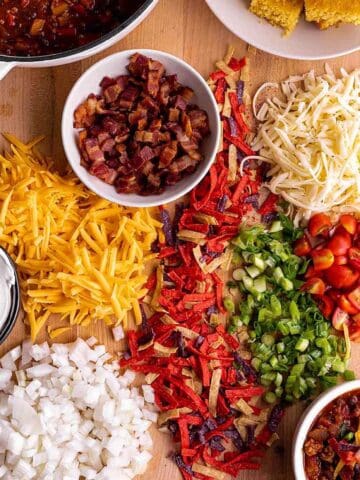
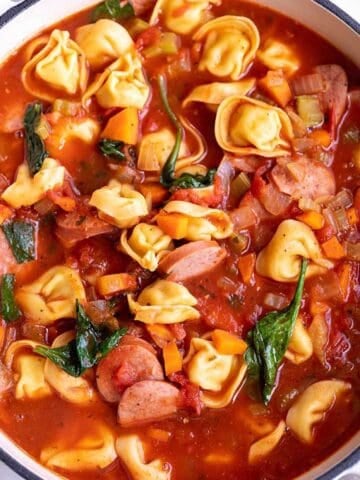
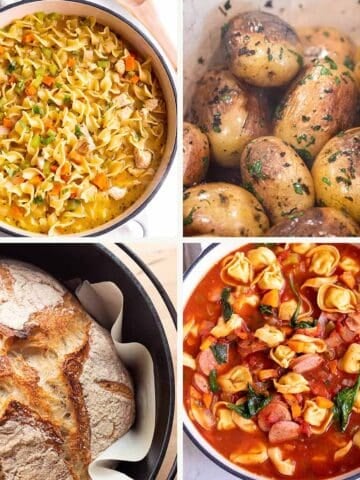
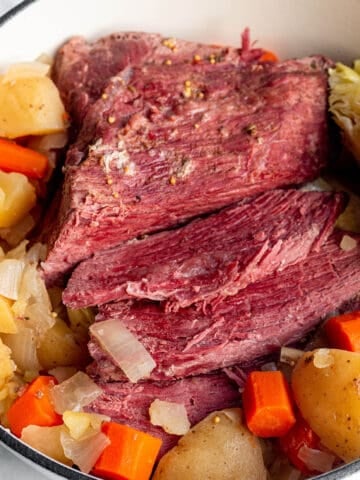
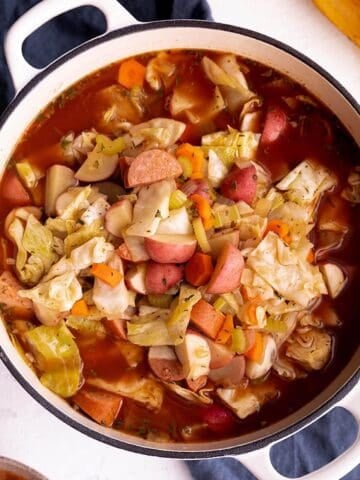
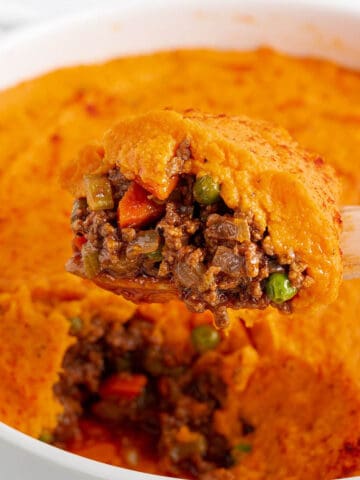
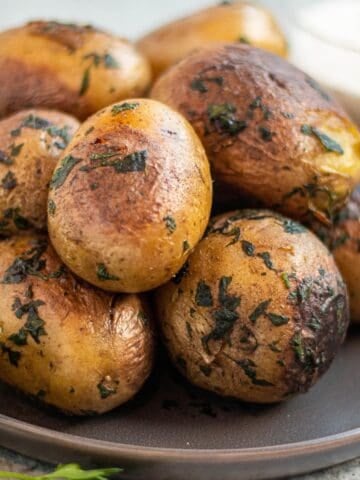
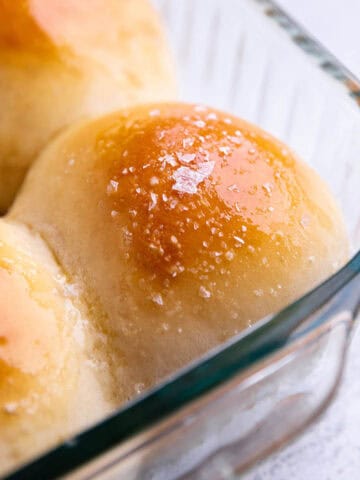
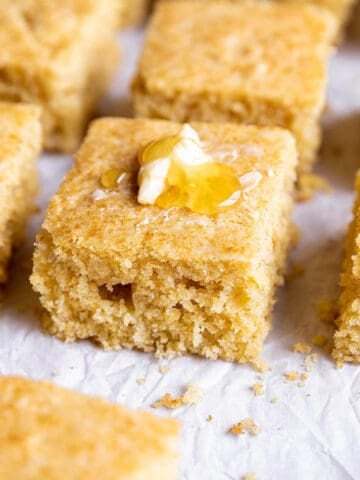
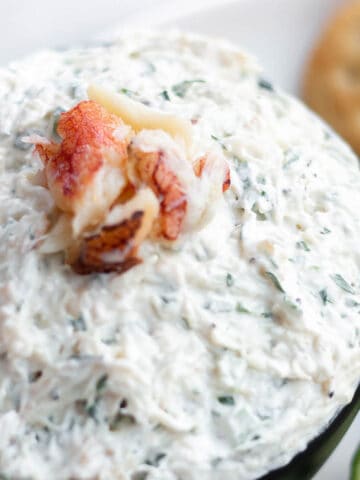
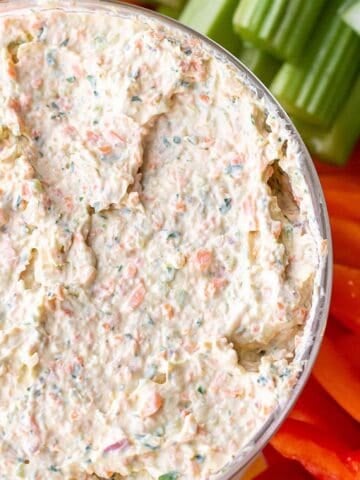
Leave a Reply